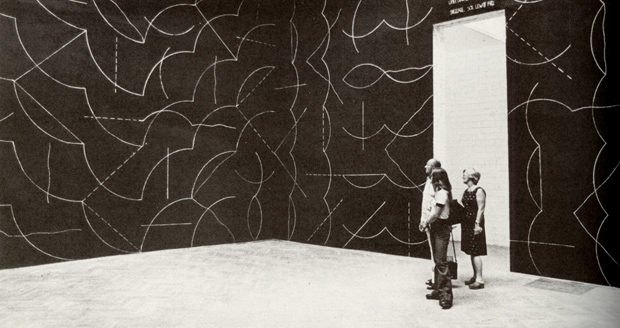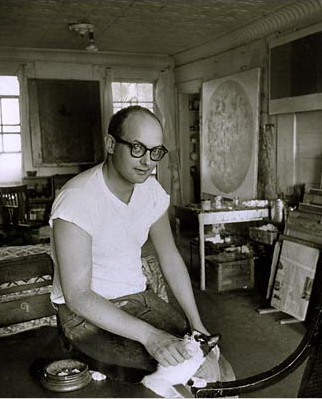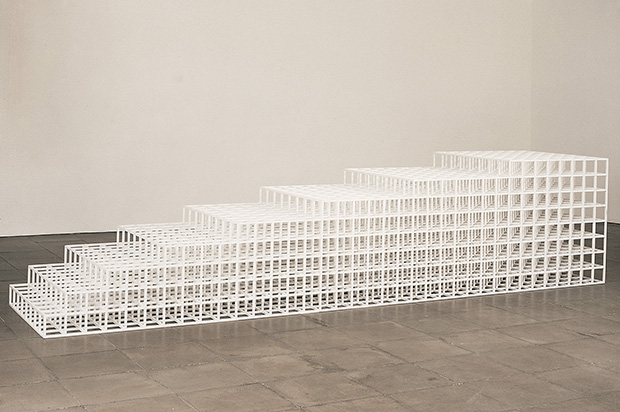
How Sol LeWitt broke art apart from its ideas
The US artist was born on this day in 1928. This is how he distinguished a work from the concepts behind it
One of the big problems that Modernism tried to overcome was the way in which industrial reproduction challenged the role of the artist. Now that a factory could, in some senses, recreate a Michelangelo sculpture; or a photograph could, in ways, better a Courbet painting, what was the value of self-expression? And what would art look like if the ideas behind a work could be separated out from this expression?
Sol LeWitt, born today, 9 September, in 1928, was a 20th century New York painter and sculptor, known for his white, open-cube structures, and his simple, abstract murals.

However, neither medium was as important to the artist as the mental conception of the work, and LeWitt worked towards dislocating the work of art from the thoughts that underpinned it. In this way advanced both the slim, marginal, theory-laden works of Minimalism and the cerebral concerns of Conceptual Art.
The artist, who worked briefly as a graphic designer for the New York Pritzker-Prize winning architect I. M. Pei before devoting himself to fine art, created white, hollow, cuboid sculptures that seemed to strip as much detail from the form as possible while still keeping the shape’s simple outline.
He also created ‘recipes’ for wall drawings; simple instructions for making a LeWitt abstract work – commonly a series of lines. Here’s an example from 1971: “Using a black, hard crayon draw a twenty inch square. Divide this square into one-inch squares. Within each one inch square, draw nothing, or draw a diagonal straight line from corner to corner or two crossing straight lines diagonally from corner to corner.”
The subsequent drawings were in keeping with kind of art Agnes Martin and Frank Stella had been making, just as his sculptures could be compared with similar pieces by Carl Andre and Donald Judd.
Yet the idea that an artist could reduce his work to a series of instructions, and go as far as employ workers to create these ‘LeWitt’ works, or even sell drawing instructions with a ‘licence’ recreate them -- as the LeWitt did – destroyed the notion of self-expression, and brought the artist’s work into dialogue with conceptual artists like On Kawara, Joseph Kosuth and John Baldessari.

As we write in The Art Book, “LeWitt exploited the contradiction between what we know to be there and what we actually see, a characteristic that links his work to Conceptual Art. The ideas of the minimalist movement can be seen in the work’s rigid adherence to geometric, mathematical calculations and its impersonal nature, with no fixed centre of interest. He said that the idea behind the work is more important than the work itself, and the planning is more important than the construction.”
Perhaps that claim seems less plausible and impressive today, than it did four or five decades ago, when LeWitt was first setting out his work. Yet, we owe our latter-day ability to distinguish the finished work from ideas behind to LeWitt and his contemporaries. Thanks for that, Sol.
For more Conceptual Art get this book; for more on Minimalism get this one; and for a greater understanding of all art history, LeWitt’s work included get The Art Book.